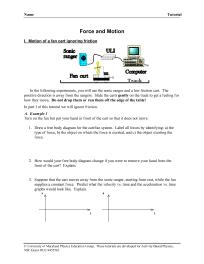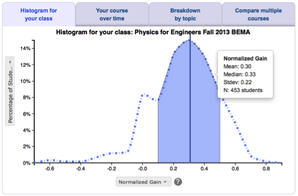
Developed by: Michael C. Wittmann, Richard N. Steinberg, Edward F. Redish, and the Physics Education Research Group at the University of Maryland


middle schoolhigh schoolintro collegeinter-mediateupper levelgrad school other

calc based

alg based







Overview
What? Guided-inquiry worksheets for use in small groups in recitation section of intro calculus-based physics. Instructors engage groups in Socratic dialogue. Activities emphasize the connection between mathematics and physics, and use computer-based tools to help in easy data gathering.
Topic outline
Velocity
Force and Motion
Newton’s Third Law
Mechanics Problems
Air Resistance
Harmonic Motion
Wavepulses: Propagation & Superposition
Mathematics of Wavepulses
Sound Waves
Heat and Temperature
Electric Field
Electric Potential
Electrostatics Problem Solving
Inductive Circuits Problem Solving
Student skills developed
- Conceptual understanding
- Making real-world connections
- Using multiple representations
- Problem-solving skills
- Metacognition
Instructor effort required
- Medium
Resources required
- TAs / LAs
- Computers for students
- Advanced lab equipment
- Cost for students
- Tables for group work
Resources
Teaching Materials
You can download the tutorials, pre-tests, and homework for free from the Activity-Based Tutorials website. You will need to contact Joe Redish for the password, following the instructions on the site. You can download a sample tutorial from PhysPort.
These tutorials have also been published as a book.
Research
This is the third highest level of research validation, corresponding to:
- at least 1 of the "based on" categories
- at least 1 of the "demonstrated to improve" categories
- at least 1 of the "studied using" categories
Research Validation Summary
Based on Research Into:
- theories of how students learn
- student ideas about specific topics
Demonstrated to Improve:
- conceptual understanding
- problem-solving skills
- lab skills
- beliefs and attitudes
- attendance
- retention of students
- success of underrepresented groups
- performance in subsequent classes
Studied using:
- cycle of research and redevelopment
- student interviews
- classroom observations
- analysis of written work
- research at multiple institutions
- research by multiple groups
- peer-reviewed publication
References
- E. Redish, R. Steinberg, and J. Saul, On the effectiveness of active-engagement microcomputer-based laboratories, Am. J. Phys. 65 (1), 45 (1997).
- T. Smith and M. Wittmann, Comparing three methods for teaching Newton’s third law, Phys. Rev. ST Phys. Educ. Res. 3 (2), 020105 (2007).
- M. Wittmann, Making Sense of How Students Come to an Understanding of Physics: An Example from Mechanical Waves, University of Maine, 1998.
- M. Wittmann, The object coordination class applied to wave pulses: Analyzing student reasoning in wave physics, Int. J. Sci. Educ. 24 (1), 97 (2002).
- M. Wittmann and M. Anderson, Comparing Three Methods for Teaching Newton’s Second Law, presented at the Physics Education Research Conference 2009, Ann Arbor, Michigan, 2009.
- M. Wittmann, R. Steinberg, and E. Redish, Making sense of how students make sense of mechanical waves, Phys. Teach. 37 (1), 15 (1999).
- M. Wittmann, R. Steinberg, and E. Redish, Understanding and affecting student reasoning about sound waves, Int. J. Sci. Educ. 25 (8), 991 (2003).





